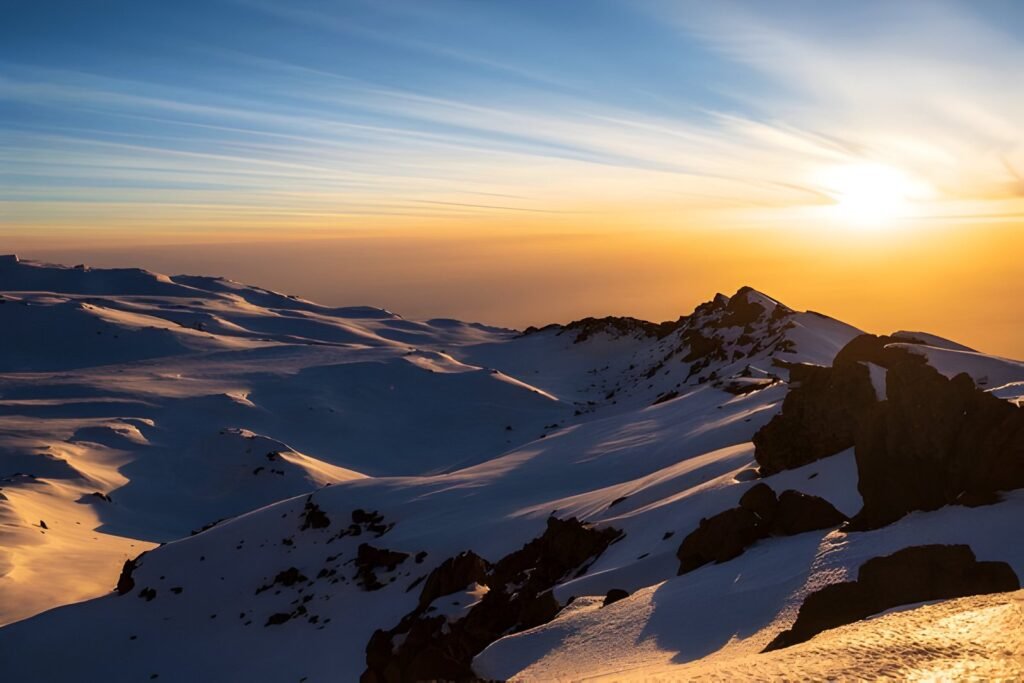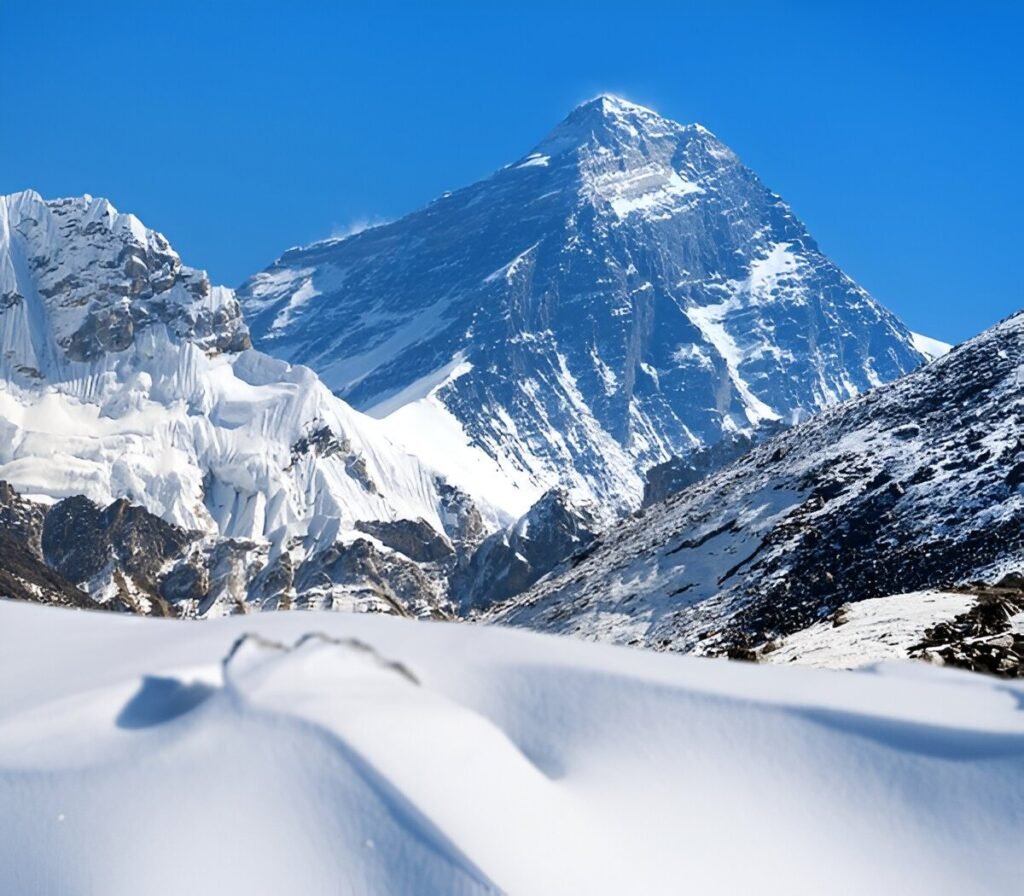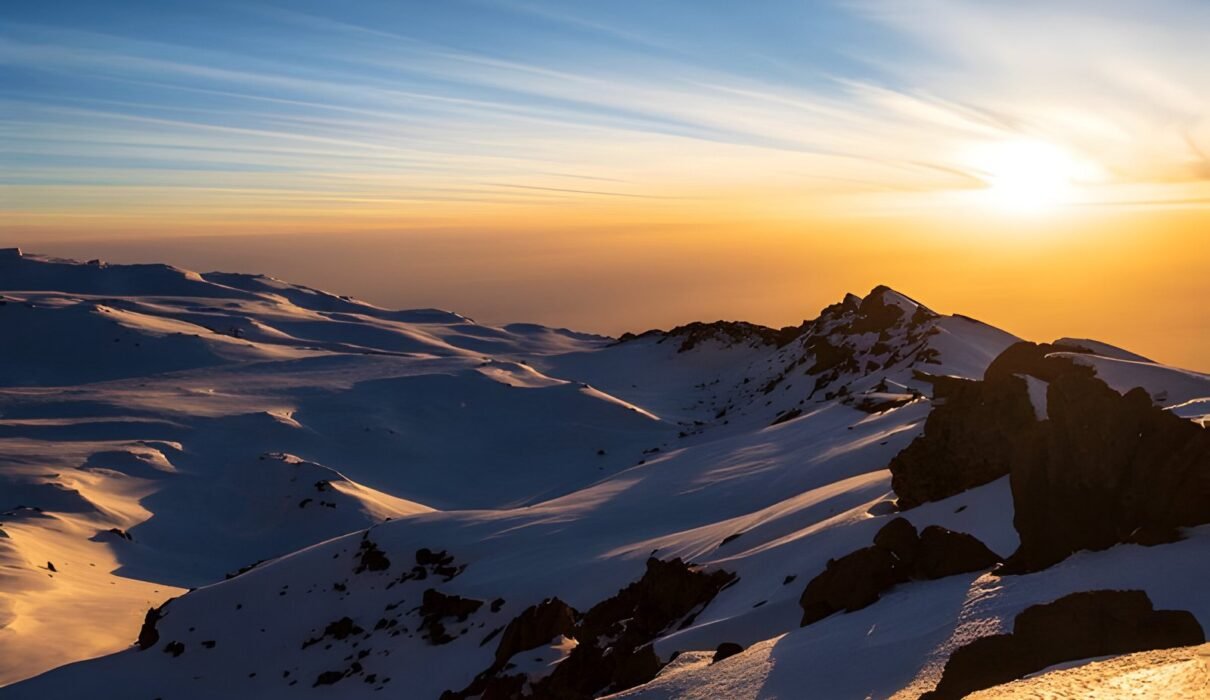Is Everest Really the Tallest Mountain. Mount Everest, towering at 8,848.86 meters (29,031.7 feet), is widely recognized as the tallest mountain on Earth. However, is it truly the tallest? The answer depends on how you measure a mountain. While Everest holds the title for the highest peak above sea level, other mountains, like Mauna Kea and Mount Chimborazo, offer interesting challenges to Everest’s crown when measured from different perspectives. In this post, we’ll explore the facts and compare Everest with other towering peaks around the globe.
Explore climbing tours for other iconic peaks.

Everest’s Height: The Highest Point Above Sea Level
Mount Everest’s height of 8,848.86 meters (29,031.7 feet) makes it the highest point above sea level, meaning it is the tallest peak measured from the Earth’s average sea level to the summit. This measurement was confirmed by China and Nepal in 2020 after several years of re-measurement due to tectonic activity and the 2015 earthquake in Nepal.
- Why It’s Considered the Tallest: Everest rises above all other mountains when measured from sea level to summit.
Discover more about how Everest’s height was measured.

Mauna Kea: Taller Than Everest from Base to Summit
While Everest is the tallest mountain above sea level, Mauna Kea in Hawaii is actually taller when measured from its base, which lies below the Pacific Ocean. Mauna Kea stands about 10,210 meters (33,500 feet) from its base on the ocean floor to its summit, making it taller than Everest in total height, even though only 4,207 meters (13,803 feet) are above sea level.
- Base to Summit Measurement: Mauna Kea’s impressive size makes it the world’s tallest mountain when measured from base to summit.
Learn more about Mauna Kea’s hidden height.
Mount Chimborazo: The Farthest Point from Earth’s Center
Mount Chimborazo, a dormant volcano in Ecuador, doesn’t come close to Everest’s height above sea level, standing at 6,263 meters (20,549 feet). However, due to the Earth’s equatorial bulge, Chimborazo’s summit is the farthest point from the center of the Earth. The planet isn’t a perfect sphere but an oblate spheroid, meaning its equator bulges outward. As a result, Chimborazo is actually farther from the Earth’s core than Everest by over 2 kilometers.
- Farthest from the Earth’s Core: Though Chimborazo is shorter in height, it technically stands farther from the Earth’s center than Everest.
Read more about Mount Chimborazo’s unique position.
Is Everest Really the Tallest Mountain in the World ? : K2: Everest’s Closest Rival
While Everest takes the crown for height, K2, the second-highest mountain on Earth, is often considered more dangerous and challenging to climb. Located in the Karakoram Range on the Pakistan-China border, K2 stands at 8,611 meters (28,251 feet). Its steep, rugged terrain and unpredictable weather make it a formidable opponent for climbers, earning it the nickname “Savage Mountain.”
- Climbing Difficulty: Many climbers regard K2 as a more difficult climb than Everest due to its treacherous conditions.
Learn why K2 is one of the deadliest mountains.
Is Everest Really the Tallest Mountain in the World ? : Mount Kilimanjaro: Africa’s Tallest Free-Standing Mountain
Mount Kilimanjaro in Tanzania is the tallest free-standing mountain in the world, rising about 5,895 meters (19,341 feet) from the surrounding plains. Unlike Everest, which is part of a larger range (the Himalayas), Kilimanjaro stands alone as a dormant volcanic mountain. It’s also a popular trekking destination for adventurers due to its non-technical routes.
- Freestanding Giant: Kilimanjaro offers a unique challenge for climbers looking to experience high altitudes without the technical demands of Everest.
Explore Kilimanjaro climbing packages.
Is Everest Really the Tallest Mountain in the World ? : Denali: The Tallest Mountain in North America
Located in Alaska, Denali (formerly Mount McKinley) is the highest peak in North America at 6,190 meters (20,310 feet). What makes Denali stand out is its topographic prominence, or how much it rises above the surrounding terrain. Its dramatic elevation gain from base to summit makes it one of the most challenging mountains to climb, particularly due to its harsh weather conditions.
- Elevation Gain: Denali’s base-to-summit rise is significant, giving climbers a tough challenge despite its lower overall height compared to Everest.
Read about Denali’s topographic prominence and challenges.
Is Everest Really the Tallest Mountain in the World ?: The Tectonic Forces Behind Everest’s Growth
Mount Everest continues to grow, albeit slowly, due to the tectonic collision between the Indian and Eurasian plates. The collision pushes Everest upward by about 4 millimeters per year. This tectonic activity also contributes to the frequent earthquakes in the region, which can affect the mountain’s height and shape over time.
- Growing Mountain: Everest’s height is not static, and tectonic forces ensure it continues to grow—albeit at a very slow rate.
Learn about the tectonic activity shaping Everest.
Is Everest Really the Tallest Mountain in the World ? : Everest’s Death Zone: Where the Air Is Thin
Above 8,000 meters (26,247 feet), Mount Everest enters what climbers call the death zone—an altitude where the oxygen level is so low that it’s difficult for humans to survive without supplemental oxygen. The air pressure in the death zone is only about a third of what it is at sea level, meaning that the body can’t get enough oxygen to function properly.
- Altitude Risks: Most climbers who reach the summit of Everest use bottled oxygen to survive the harsh conditions in the death zone.
Read more about the dangers of Everest’s death zone.
Is Everest Really the Tallest Mountain in the World ? : The Summit of Everest Has Less Oxygen Than Sea Level
At Everest’s summit, the oxygen level is about one-third of that at sea level. This extreme lack of oxygen makes it difficult to breathe, even with the assistance of bottled oxygen. Climbers must pace themselves and ascend slowly to avoid altitude sickness or worse, such as high-altitude cerebral edema (HACE) or high-altitude pulmonary edema (HAPE).
- Oxygen Use: Despite their training, most climbers rely on bottled oxygen to reach Everest’s summit.
Discover how climbers use oxygen at extreme altitudes.
Is Everest Really the Tallest Mountain in the World ? : Everest’s Summit Has Become Crowded
While Mount Everest once represented the ultimate challenge for only the most experienced climbers, advances in technology, guiding services, and commercial expeditions have made it more accessible. However, this has led to increased crowds at the summit, with images showing long lines of climbers waiting to ascend during peak season. This overcrowding poses additional risks due to delays and limited resources like oxygen.
- Overcrowding Dangers: The crowded conditions, especially in the death zone, can make summiting even more hazardous.
Read about the issue of overcrowding on Everest.
Is Everest Really the Tallest Mountain in the World ? : Conclusion
While Mount Everest remains the tallest peak above sea level, other mountains like Mauna Kea and Chimborazo offer unique challenges to its title, depending on how height is measured. Whether you’re interested in the highest peak, the tallest from base to summit, or the farthest point from Earth’s center, each of these mountains provides its own awe-inspiring characteristics.
For guided climbs and more information on tackling some of the world’s tallest mountains, visit Kilimanjaro Climb Specialist or Eddy Tours & Safaris.

